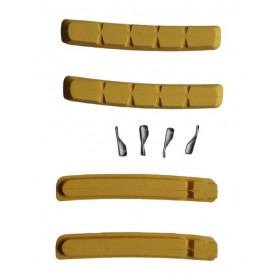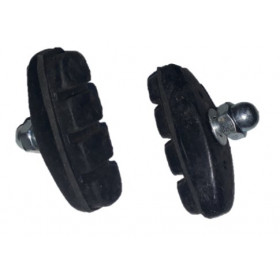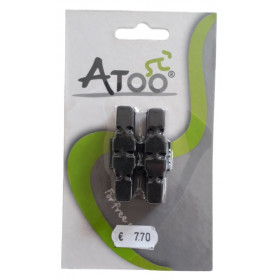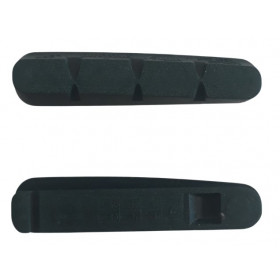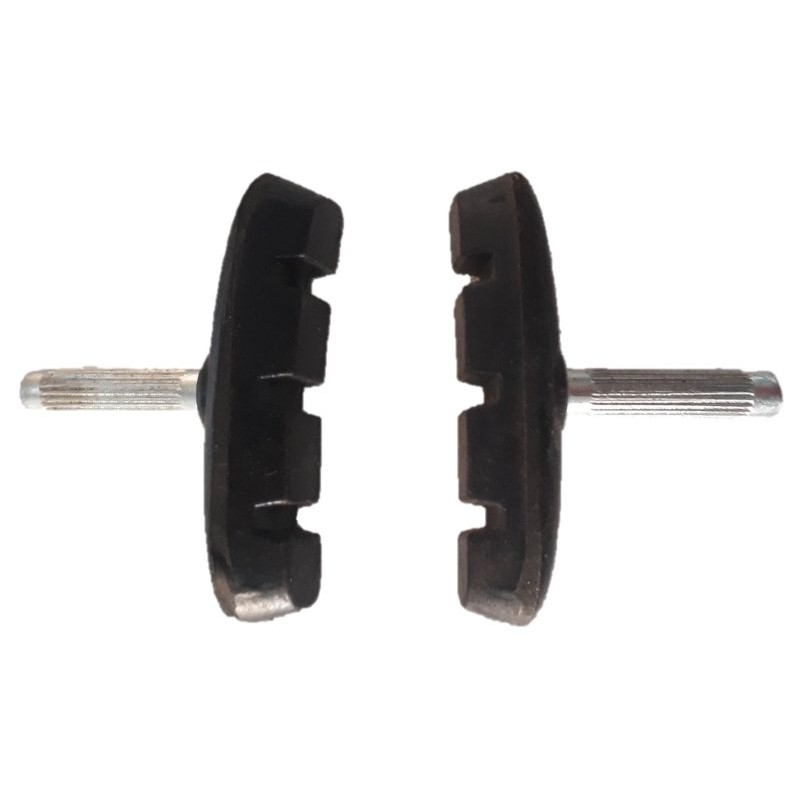 zoom_in
zoom_in
Brake pads for V-Brake or cantilever
- 37 Items
- New
-
Specific References
- 3294030023802
€2.99 VAT included
Cantilever brake pads: the complete guide to choosing the right pads for your bike
When it comes to ensuring effective and safe braking on a bicycle, choosing the right brake pads is essential. Among the different types of braking systems, the cantilever brake stands out for its robustness and its ability to deliver solid braking power, even in tough conditions. Today, let’s focus on cantilever brake pads, those often overlooked but vital components of your bike’s braking system.
What is a cantilever brake ?
Before diving into the details of the pads, let’s quickly review the cantilever braking system itself. This is a center-pull brake made up of two brake arms mounted on either side of the fork (at the front) or the seat stays (at the rear). A cable runs between the two arms via a small yoke called a straddle cable, which activates the braking.
Cantilever brakes were widely used on cyclo-cross bikes, 90s mountain bikes, and certain touring bicycles. Their main advantage: they offer plenty of tire clearance and space for mudguards.
Key features of cantilever brake pads
Cantilever brake pads are specific components designed to fit the unique alignment of cantilever brake arms. Here are their main characteristics:
-
Slim and short design: unlike V-brake pads, cantilever pads are shorter, often thinner, and have a narrower profile.
-
Threaded post mounting: cantilever pads typically attach via a threaded post that passes through the brake arm and is secured with a nut.
-
Specialized rubber compound: the pad material varies based on needs: softer compounds for better grip in dry conditions, or harder compounds for durability and better performance in the wet.
-
Rim compatibility: cantilever pads are made to brake against the rim sidewalls. Options exist for both aluminum and ceramic rims.
-
Fine adjustability: thanks to the threaded post length and spacer washers, you can finely adjust the pad alignment to prevent rim rubbing and uneven wear.
Advantages of cantilever brake pads
Choosing quality cantilever brake pads means enjoying several benefits on your bike:
-
Braking modulation: cantilever brakes allow for gradual and controllable braking—ideal for long descents or technical trails.
-
Resistance to clogging: thanks to their open design and wide clearance, cantilever brakes (and their pads) are less prone to mud and debris build-up.
-
Easy maintenance: replacing cantilever pads is quick and affordable.
-
Versatility: they suit many bike types: cyclo-cross, touring bikes, vintage mountain bikes, and more.
How to choose your cantilever brake pads
Several criteria matter when choosing the right pads:
Rim type: make sure the pad compound is compatible with your rim material (mainly aluminum or steel).
Weather conditions: if you ride often in rain or muddy conditions, go for a harder compound designed for wet performance.
Length and model: some older cantilever brakes require specific pad lengths.
Quality vs. price: avoid ultra-cheap models. Effective braking is worth more than saving a few euros (or dollars).
Maintenance & replacement: when to change your cantilever pads?
Here are a few signs it’s time to replace your cantilever brake pads:
-
Metal threads or streaks showing through the rubber
-
Visible wear or fading of the water-dispersing grooves
-
Brake feel becoming too soft or too harsh
-
Unusual noises during braking (metallic squealing, grinding)
Replacement is simple: unscrew the nut, remove the old pad, install the new one while ensuring correct angle and alignment, then securely tighten.
In summary
Cantilever brake pads remain a must-have for cyclists riding bikes equipped with this type of braking system. When carefully chosen and properly maintained, they offer consistent and reliable braking power in all conditions.

